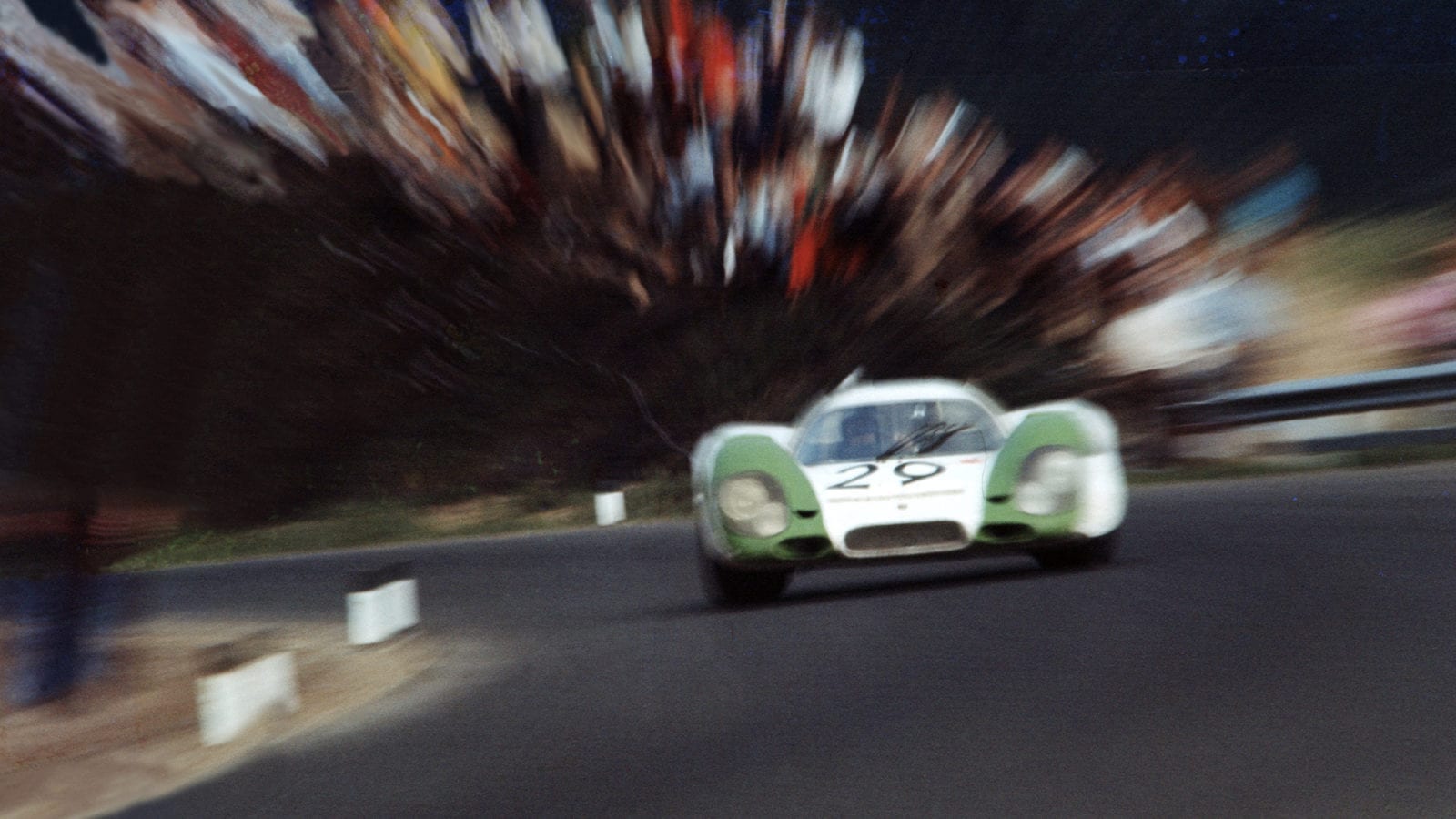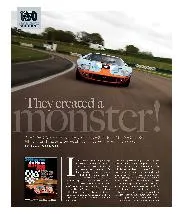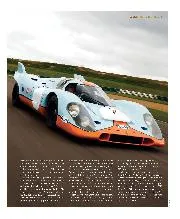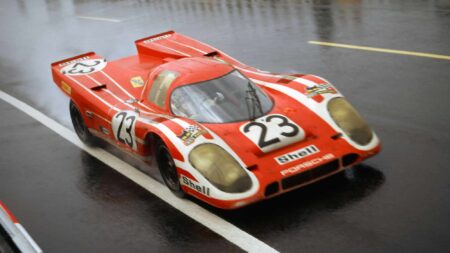The starting area of the new circuit is not as wide as it might have been, and the cars were lined up in rows of two, Ickx (Mirage) and Bonnier (Lola) on the front row, followed by Servoz-Gavin (Matra) and Siffert (Porsche 917), Giunti (Alfa Romeo) and Attwood (Porsche 917), Gregory (Porsche 908) and de Adamich (Alfa Romeo), Piper (Lola) and Koch (Porsche 908), and the rest of the total of 36 starters. The race distance was 170 laps and at midday the one and only Fangio dropped the Austrian flag and sent the field on their way. As expected, the opening sequence became a battle between lckx and Siffert, the enormous power advantage of the 917 Porsche being offset by the fact that it is still a handful on corners and keeps the driver very busy, whereas the Mirage was far superior on handling, though more than 100 b.h.p. down on the Porsche. Although Ickx led at the start, Siffert got by within four laps and then did his utmost to shake off the blue and orange Mirage, but to no avail, for lckx kept right behind the 917 with the green flashes over the front wings, and these two out-stripped the rest of the runners. In the opening laps Casoni spun off with one of the 3-litre Alfa Romeos, causing much alarm among the lesser lights at the back of the field and the Chevrons of Enever and Edwards collided, the former in the yellow J.C.B. Ltd. car suffering only a crack in the fibreglass tail, but the latter in the TOR Lines Racing car crumpled the front, which ultimately caused its retirement. Gregory was in fine form with the old borrowed Porsche 908 and was a secure third, and Bonnier was leading Giunti and Servoz-Gavin. Behind them Koch (908), Attwood (917), de Adamich (Alfa Romeo) and Lins (908) were having a great scrap amongst themselves.
For 25 laps Siffert and Ickx ran more or less nose-to-tail, in and out of the slower cars, often passing one on each side of someone who was not looking in his mirror, or going between two cars that were busily having a private race of their own. It was all good long-distance-racing manoeuvres of the sort that keeps the top drivers right on their toes. Siffert lapped the other 917, which must have depressed Attwood, and Bonnier, Servoz-Gavin; Koch and Giunti were now scrapping for fourth place, while Gregory was secure in third place, but worried by an increasing vibration as if the wheels were going out of balance. Further down the field the Austrian driver Marko, in a 910 Porsche, was holding on to Pilate in the Belgian 2½-litre Alfa Romeo, which was a creditable effort, and Lins caught and passed de Adamich. Ickx had never been more than a few feet behind the 917 and he now got by and had a turn at leading, while Gregory was forced to call at the pits as the vibrations were getting worse. All four wheels were changed and this cured the trouble, but lost him nearly four laps, and put him at the back of the field, which left Bonnier in third place. Koch got by the Matra to take fourth place, but not for long as all his oil pressure faded and he was forced out. The first signs of the thirst of the 917 Porsches was seen when Attwood was called in after he had done 35 laps, and only three laps later Siffert was in for petrol, while Giunti’s Alfa Romeo 3-litre was equally thirsty. Redman took over from Attwood, Ahrens from Siffert and Galli from Giunti, and Ickx now had a long lead of nearly a lap over Bonnier. Refuelling was being done with open churns and funnels so it was a fairly long business, but it was equally bad for everyone. It was 41 laps gone before Ickx brought the Mirage in for fuel and for Oliver to take over, and by that time he had lapped the second-place Lola, but during the stop the Lola went by to get back on the same lap. The 908 Porsches did not have to start refuelling until after 42 laps, but apart from Gregory they were not being driven quickly enough to take advantage of the better fuel consumption. Bonnier’s Lola and the Matra both ran 43 laps on their original full tanks, five laps more than the 917 Porsche, and this was significant, for they were not all that much down on speed. The Matra refuelling was quicker than most and Rodriguez took it back into the race in second position behind the Mirage, the Gulf team not having wasted any time.




